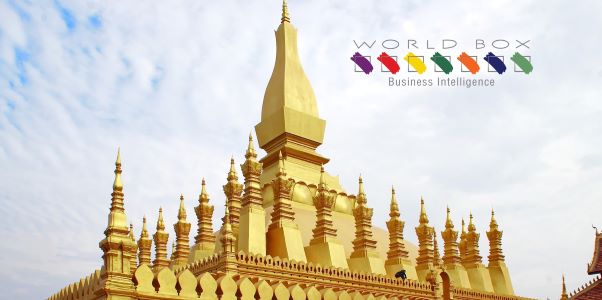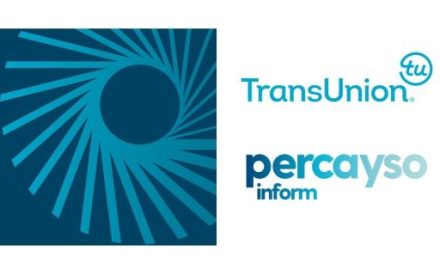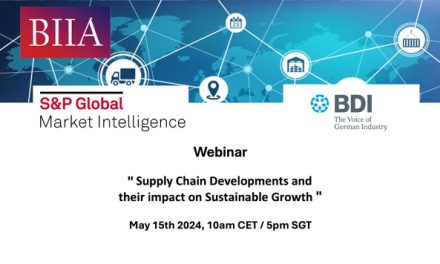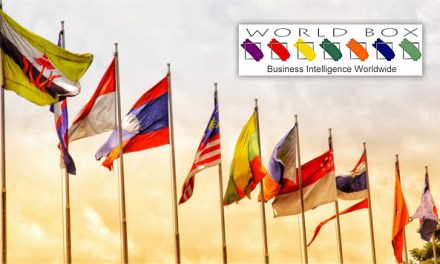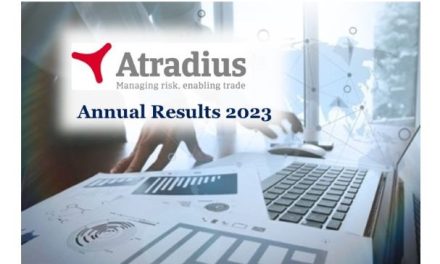SUMMARY
Political risk: Reduced, from 8 to 7/10
Economic risk: Reduced, from 6 to 5/10
Commercial risk: Reduced, from 5 to 4/10
The risk assessment of a country is made up of 3 components, being Political, Economic and Commercial. Each component is scored out of 10 with 1 being the lowest risk and 10 the highest.
Political risk – Downgraded to 7
Laos has experienced relatively high levels of political stability for nearly 50 years, following the end of the Indochina conflict in 1975 and the takeover of the communist Pathet Lao movement. Laos remains a one-party state, under the control of the communist Lao People’s Revolutionary Party (LPRP). There is little opposition to the party’s rule. National Assembly elections are held every five years but are not free or fair, while protests are banned.
Since the late 1980s, the government has pursued a similar economic and political model to those of Vietnam and China. It has implemented market-based economic policies while maintaining a high degree of state control and welcoming foreign direct investment (FDI). This has proved highly successful in generating rapid economic growth. Over the decade prior to the pandemic, for example, annual growth averaged just under 8%, one of the highest levels in the world.
A party congress at the beginning of 2021 heralded modest changes at the top of the party and reaffirmed Laos’s economic strategy, including its growing reliance on China. However, a significant turnover of personnel took place at lower levels, with new technocratic officials taking over from wartime officials and party apparatchiks. The move seems to recognize criticism relating to corruption and economic mismanagement.
The popular prime minister and party number two Thongloun Sisoulith succeeded the retiring Bounnhang Vorachith as general secretary. As prime minister, Thongloun attempted to curb government waste and corruption. At the congress, he acknowledged the government’s poor financial management record and announced a reduced annual growth target of 4% for 2021–25, perhaps in recognition of the debt problems facing the country (see Economic Risk).
WBI has downgraded the country’s political risk because of the severe economic challenges facing the country in 2022 – see July update on Political Risk.
Economic Risk – Downgraded to 5
The Laotian economy has grown by nearly 8% a year for the last decade. Accession into the World Trade Organization in 2013 and the creation of the ASEAN Economic Community (AEC) in 2015 precipitated significant reforms designed to improve the business and investment environment. Rapid economic growth in neighbouring countries such as China, Vietnam and Thailand has also boosted trade and FDI.
China, Thailand and Vietnam are the country’s main trade and investment partners. Trade with China is growing particularly rapidly, aided by massive Chinese FDI and the China–Laos Railway project, which travels across Laos from the Chinese border to the capital Vientiane. Three Chinese-backed highway projects are also underway as part of China’s Belt and Road Initiative.
The railway project should have a significant impact on growth by encouraging FDI and attracting increasing tourism from China. It should also boost exports. The cost of shipments from Vientiane to Kunming, in the southern Chinese province of Yunnan, will be cut by 40–50%, along with a 20–40% cost reduction on domestic routes, according to a World Bank report. Exports from Laos to China were worth US$1.7 billion in 2019 and could expand by about 20% per year, according to the UN.
However, there are growing concerns that Laos could be falling into a debt trap. The country’s official debts have grown rapidly in recent years and now equal 86% of GDP, with 60% owed by the public sector and the remainder comprising public–private partnerships such as the Boten-Vientiane railway. The risk associated with this debt, largely denominated in dollars, increases during periods when the kip is depreciating, as is the case in 2022.
A report on Radio Free Asia in mid June cast doubt on whether Laos could meet its external debt obligations. At least $400 million due in loans this year can’t be repaid, while another $1 billion is due to be paid each year from 2022-2025 according to the report.
State officials and Lao researchers say they now see no way the one-party communist state can meet the debts it owes foreign lenders, mostly in China but also in Thailand and Vietnam, amid the global pandemic.
Half of the external debt is owed to China, following its numerous investments in the country, including the US$5.9bn loan for the China–Laos high-speed train line and US$17.8bn for three highways, as well as loans for hydroelectricity projects. If Laos falls into arrears, many of its infrastructure assets could be seized by China. In 2018, the US think tank Center for Global Development cited Laos as one of eight countries with particularly weighty debts to China.
In mid-June 2022, Moody’s Investor Service downgraded Laos’ sovereign debt rating one notch further into non-investment grade, or “junk” territory, to Caa3 from Caa2. The rating agency said Laos’s default risk would “remain high given very weak governance, a very high debt burden and insufficient coverage of external debt maturities” by foreign exchange reserves. Laos’ problems follow hot on the heels of those seen in Sri Lanka, which in June became first Asia-Pacific country in decades to default on its foreign debt.
The IMF has also warned that Laos is also vulnerable to a sharper-than-expected slowdown in China – Laos’s largest trading partner and FDI investor – that reduces exports and decelerates FDI flows. In addition, lower demand growth from Thailand and Vietnam may reduce growth in electricity exports.
Natural disasters are an ever-present threat. GDP growth slowed to 6.3% in 2018 from 6.8% in 2017, for example, as both agricultural and industrial production declined, mainly due to natural disasters. Heavy rainfall from tropical storms resulted in flooding across the country, followed by the collapse of the Xe-Pian Xe-Namnoy dam.
Commercial risk – Downgraded to 4
The economic crisis is having a significant impact on businesses ability to pay their debt. One report in mid-June from Radio Free Asia suggested that half of all SMEs are facing severe difficulties.
Laos was already one of the most difficult countries in the Asia–Pacific region in which to do business, according to the World Bank, which ranked it 154th among 190 in its 2020 Ease of Doing Business guide, ahead of only Myanmar in Southeast Asia.
The World Bank says the low ranking reflects the country’s complex and opaque business environment, with barriers to regional trade and integration that limit its attractiveness as an investment destination. The Bank cites investors’ complaints about the high costs of doing business and the absence of a transparent, dynamic and streamlined business environment. Overall, the economy remains inward-oriented (only 2.9% of firms export directly), with little investment or innovation among local firms.
Corruption is another significant challenge. Laos ranks 134th out of 180 countries in Transparency International’s (TI) 2021 Corruption Perceptions Index. Laos is considered to be the third most corrupt country in the ASEAN region, behind Myanmar and Cambodia.
The Laos Corruption Report by GAN also declares that corruption is a high risk for companies operating in Laos and deters foreign investment. GAN says that political patronage pervades all business sectors, and a culture of corruption has been perpetuated by senior LPRP leaders and by foreign investors willing to buy political support and pay off officials. It adds that companies are likely to encounter petty bribery when trading across borders, paying taxes or acquiring public services.
In terms of the rule of law, GAN says that a weak and inefficient judiciary impedes the proper enforcement of anti-corruption laws and officials are rarely prosecuted. It adds that bribery is widespread in both civil and commercial cases, and the legal system is subject to political interference.
July 2022 bulletin
Political risk – Downgraded to 7 out of 10
The economic crisis facing Laos in mid-22 could have repercussions in the political environment. Public anger is reportedly mounting with chatter on social media chatting about possible street protests, although none have materialized so far. Surging food and fuel prices are creating severe hardship for may Laotians with reports of staples such as noodles and eggs doubling in price.
The police are likely to deal severely with any that do take place. However, given the failure of current policies, change could well come from within the government. There are rumours, for example, of divisions within the administration with younger technocrats arguing for greater liberalization and diversification of the economy. Some high-ranking officials and ministers may resign to assuage public anger.
Economic risk – Downgraded to 5 out of 10
The economic environment has deteriorated significantly in recent months, and there are concerns that Laos is facing a similar predicament to Sri Lanka, which, which in June became the first Asia-Pacific country in decades to default on its foreign debt. In June, Moody’s Investors Service warned that the country was on the brink of default citing weak governance, very high debt and insufficient foreign exchange.
A loss of investor confidence has sparked a sharp decline in the value of the kip. By June, it had fallen by around 40% against the dollar over the past year. With oil prices also rising sharply as a result of the Ukraine war that has left importers struggling to buy fuel, which will damage economic growth prospects. The lack of fuel, for example, means new rice cannot be sown in several parts of the country. Inflation hit 13% in May 2022.
Possible measures to address the crisis include a ban on holding foreign currencies in order to avert the liquidity crisis. The government is also said to have plans to issue high-yield bonds to reduce the amount of cash in circulation. In mid June, the government also announced it had enough fuel available for the next three months.
Prior to the economic crisis, the IMF estimated the economy would grow by 2.1% in 2021 while the Asian Development Bank estimated growth at 2.3%.
The World Bank downgraded its forecast for economic growth in 2022 to 3.8% from the 4.5% predicted in October last year.
Meanwhile the Asian Development Bank (ADB) forecasts growth of
3.4% in 2022 and 3.7% in 2023. It added recovering investment and rising output in capital intensive industries, including electricity and mining, gradually recovering tourism, and agriculture’s continued steady performance would underpin growth.
The ADB warned that new Covid variants and inflationary pressures exacerbating an already high level of debt distress were the key downside risks.
In 2021, Laos recorded a trade surplus of US$1bn, with the value of exports amounting to US$7bn and imports valued at $6bn. Inflation leapt to an annual pace of over 8% in March, fuelled by the rising cost of imported goods as the kip continues to depreciate.
The full re-opening of the country to foreign tourists in June 2022 will provide a welcome boost to the economy. The country received 4.79 million tourists and earned US$935m from tourism in 2019, making the sector a vital source of foreign-exchange earnings. International visitor numbers fell to under 900,000 in 2020. The opening of the China–Laos high-speed train line in late 2021 should also boost the economy, although Chinese COVID-related restrictions on outward bound Chinese tourism will restrict the impact, at least during 2022.
In 2022, the government announced plans to open a new rail link from Laos to the port of Vung Ang in central Vietnam with construction starting as early as November 2022. The scheme is part of the government’s ambitions to turn Laos into a regional logistics hub by forging rail links with China, Vietnam and Thailand. In 2021, the construction of the Vientiane Logistics Park – built at a cost of over US$700m – was completed the day after the China-Laos high-speed railway – the first of its kind in Southeast Asia was launched. There are plans to build another logistics side across the Mekong from Vientiane in Thailand. An upgraded railway will link this facility to the Laem Chabang, Thailand’s biggest trading port.
The government believes transforming Vientiane into a node connecting ASEAN and the Chinese market by both road and rail will enhance the country’s trade competitiveness and stimulate investment.
Commercial risk – Downgraded to 4 out of 10
Counterparty risk, already difficult to assess (corporate financial information is rarely available and, when available, is usually unreliable), has almost certainly risen during the pandemic. The legal system continues to make debt collection very unpredictable.
An official report into corruption published in April 2022 has lost hundreds of millions of dollars to endemic corruption. The Lao State Inspection Authority said widespread graft had beset government-sponsored investment and development projects leading to a loss of US$767 million since 2016. A report by the Union of Catholic Asian News added, however, that locals are unimpressed by such government-sponsored reports, considering them to be part of an official whitewashing of rampant corruption. It added that numerous citizens who have voiced their concerns about corruption and malfeasance by communist officials have been arrested and tried in recent years.
Latest economic data
About Worldbox Business Intelligence
An independent service, Worldbox Business Intelligence provides online company credit reports, company profiles, company ownership and management reports, legal status and history details, as well as financial and other business information on more than 50 million companies worldwide, covering all emerging and major markets.
Worldbox was founded in the 1980s, with the vision to become a global business provider. Its ability to deliver data in multiple languages in a standard format has strengthened its brand.
Copyright (C) 2022 Worldbox Business Intelligence. All rights reserved.
Worldbox Business Intelligence
Breitackerstrasse 1
Zollikon
Zurich 8702
Switzerland
